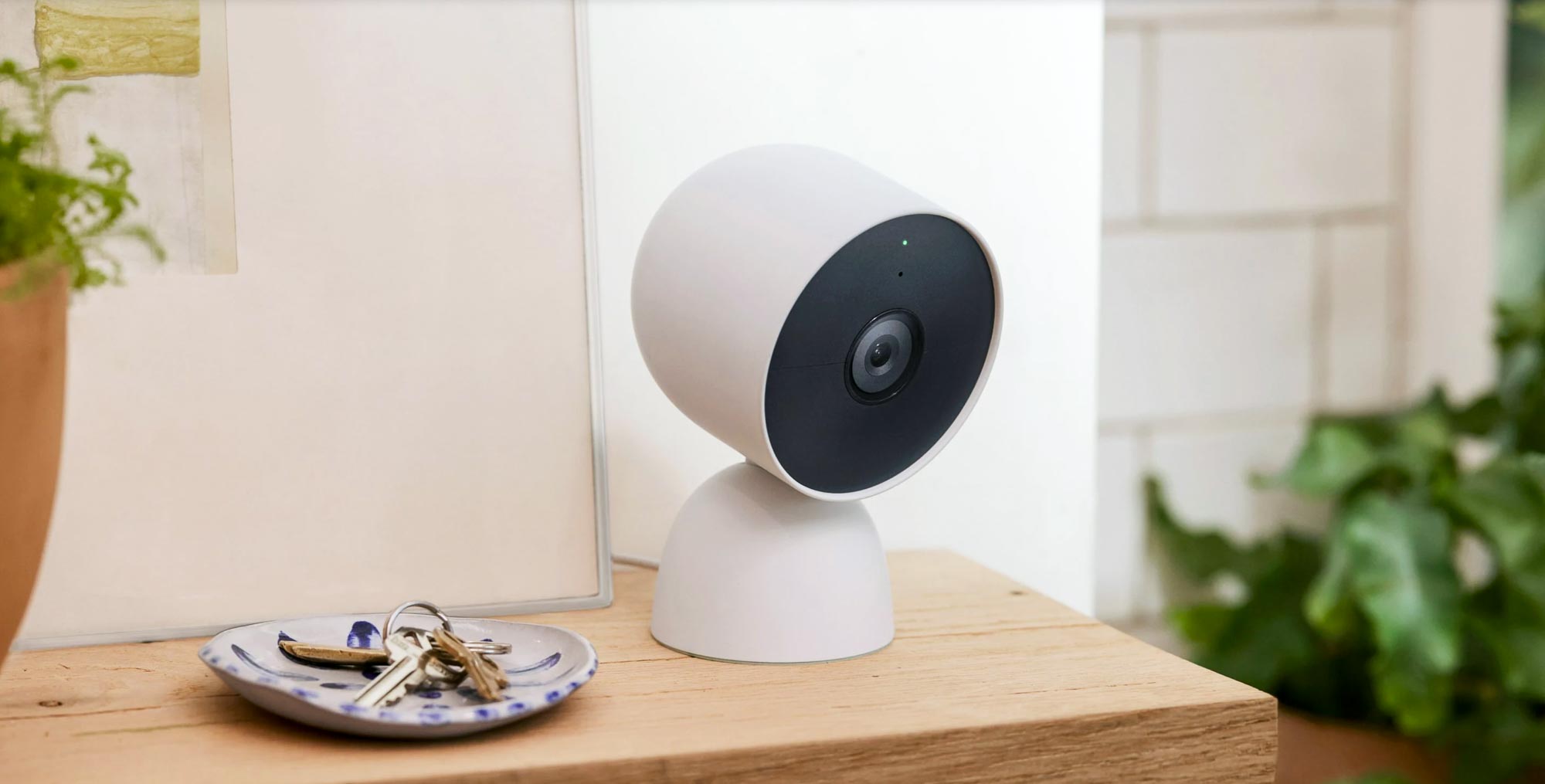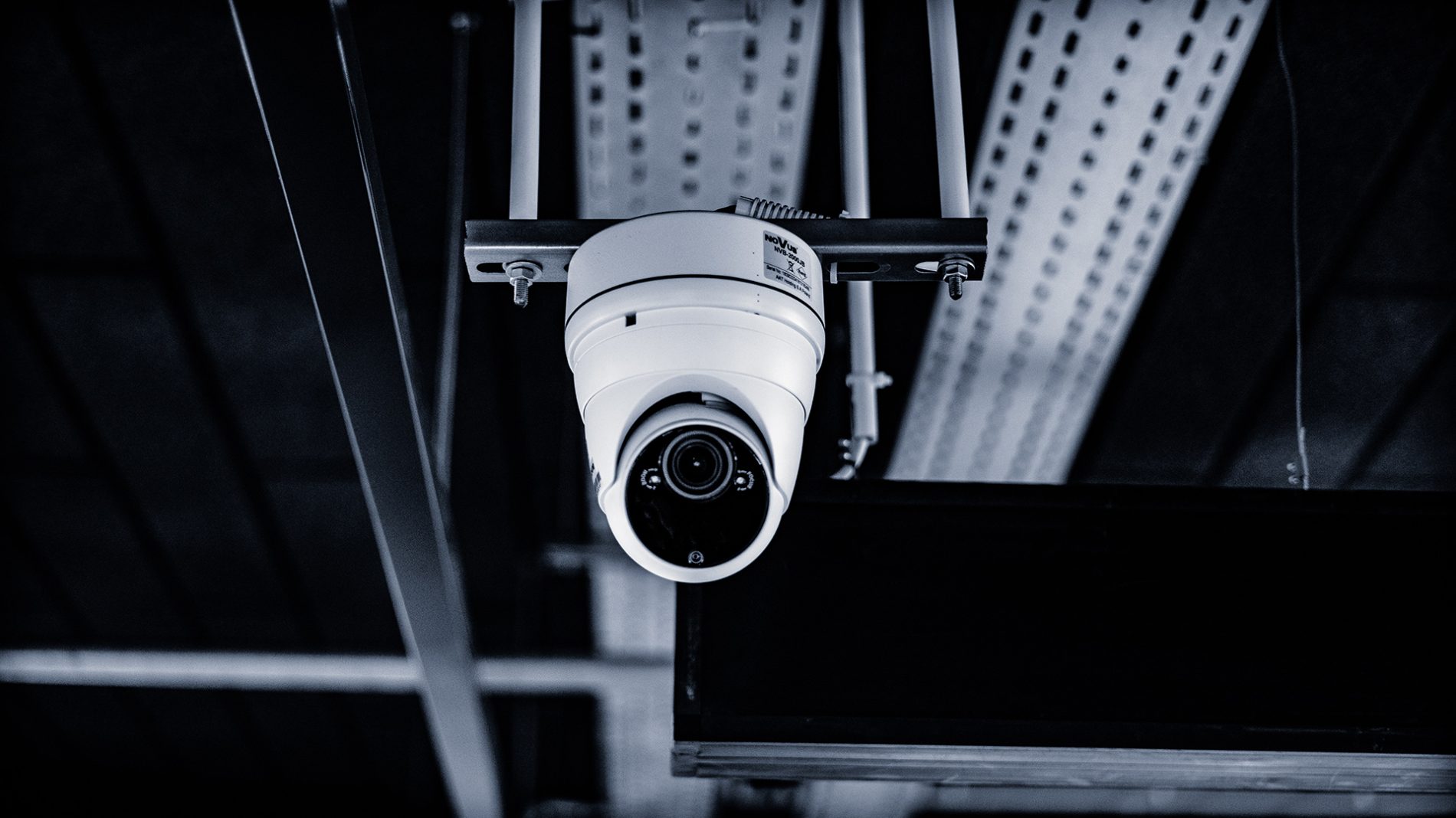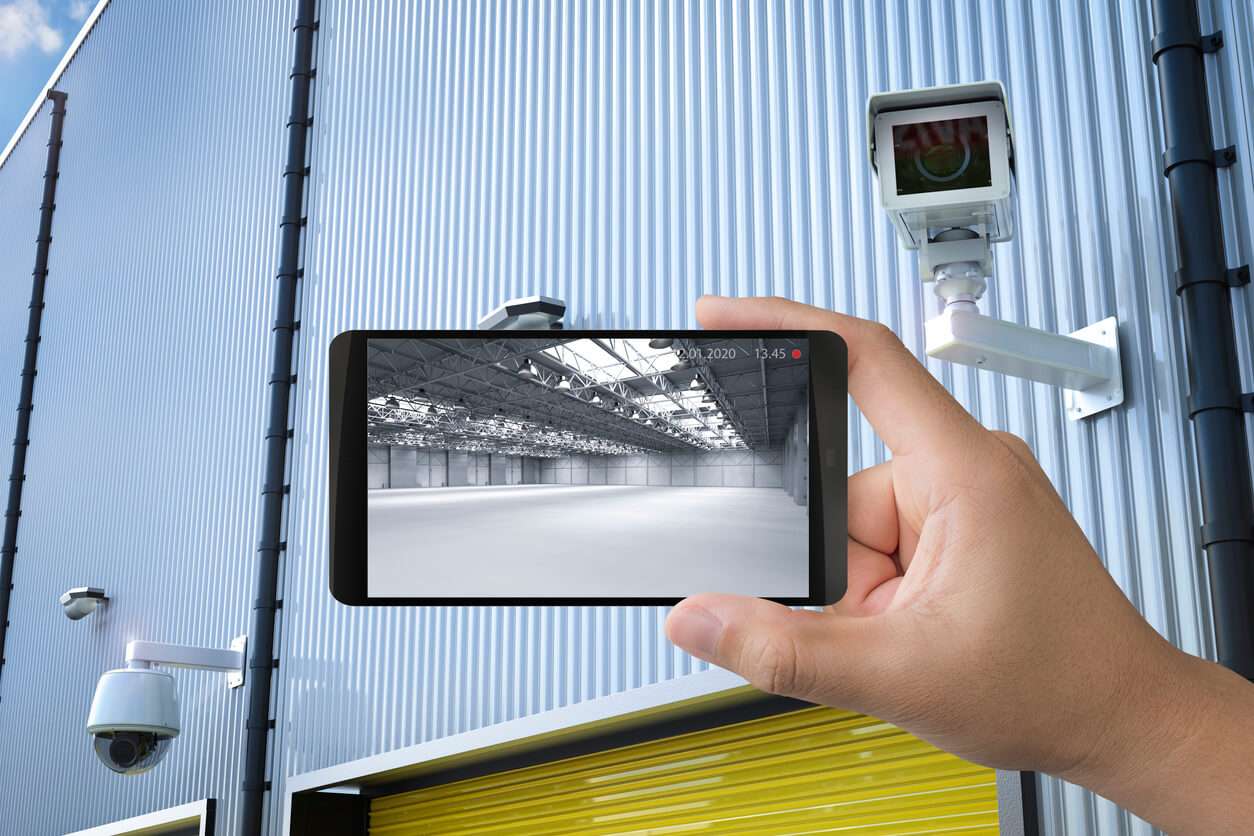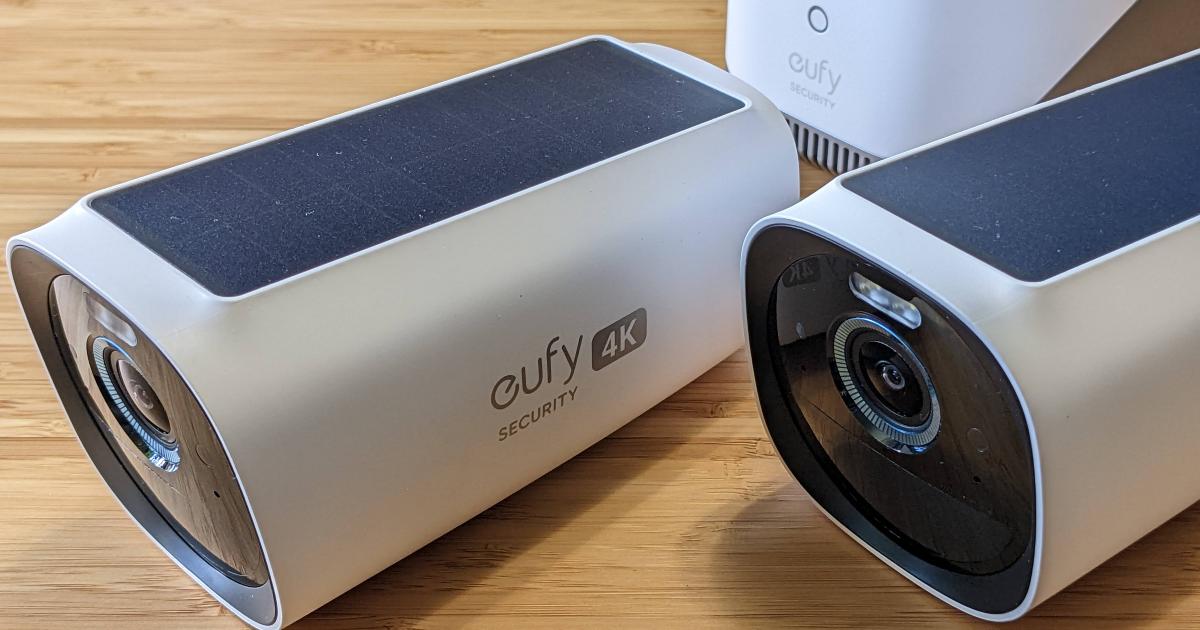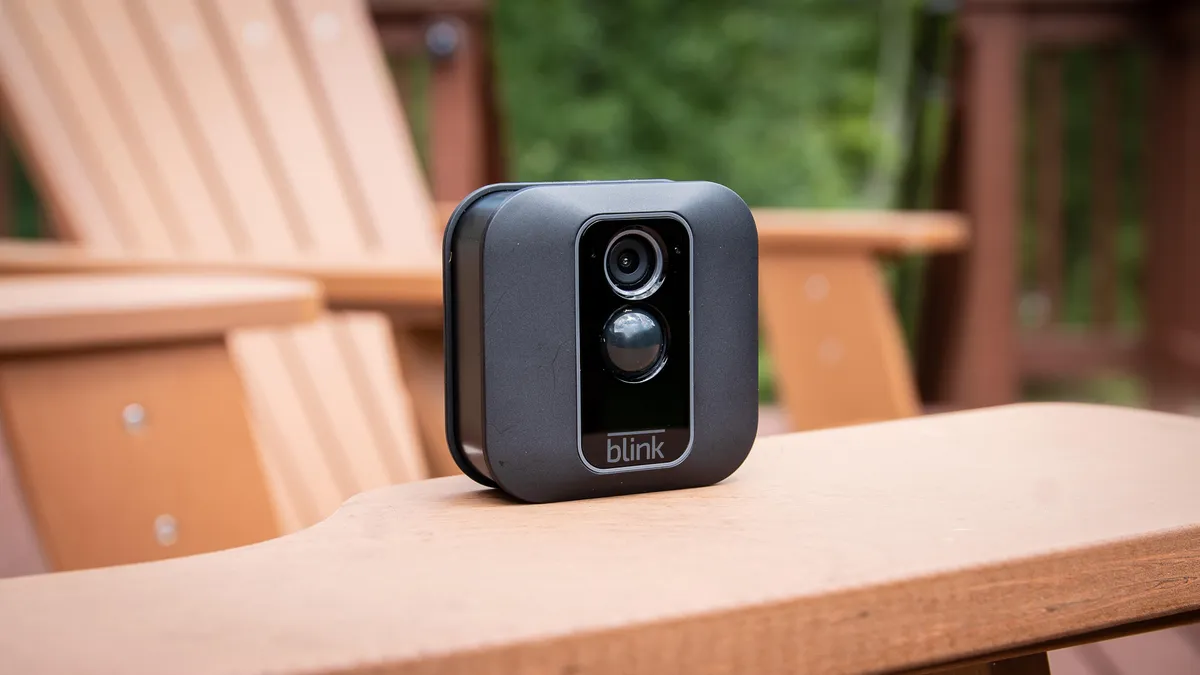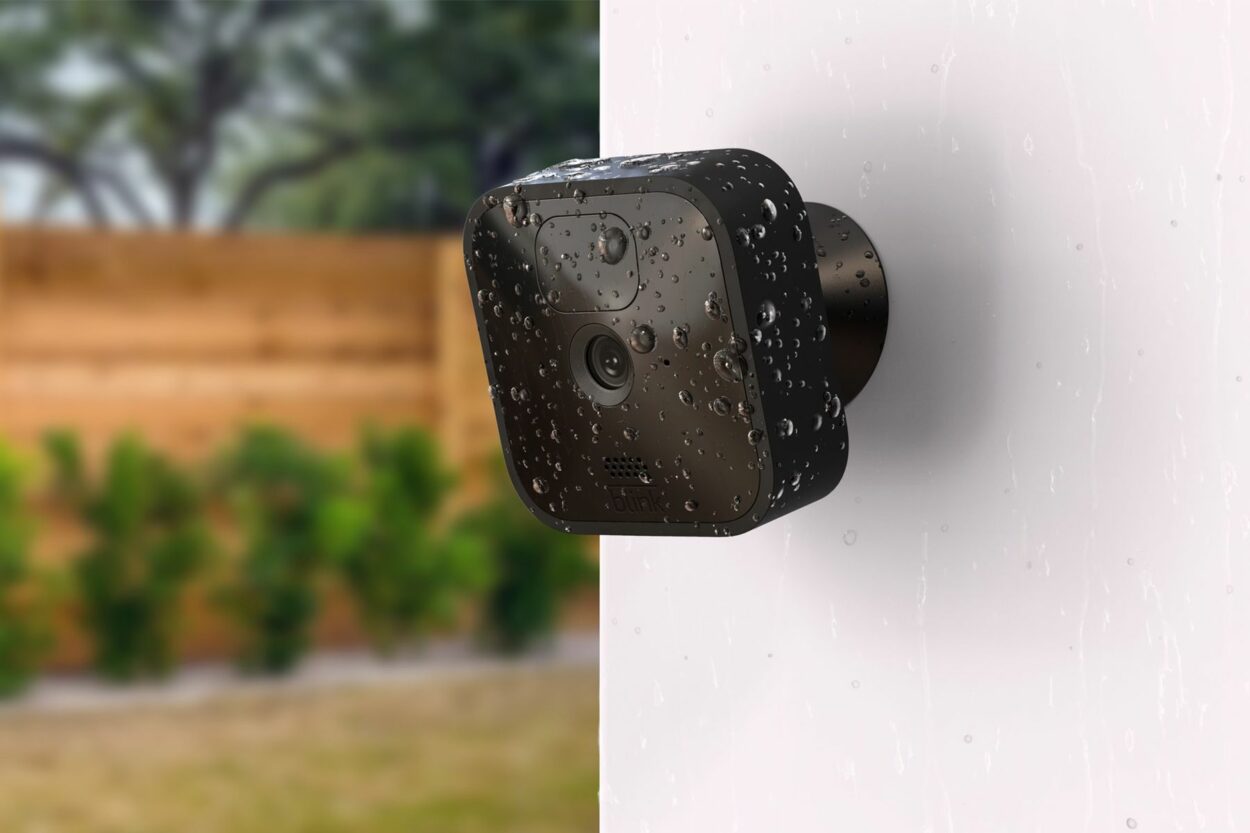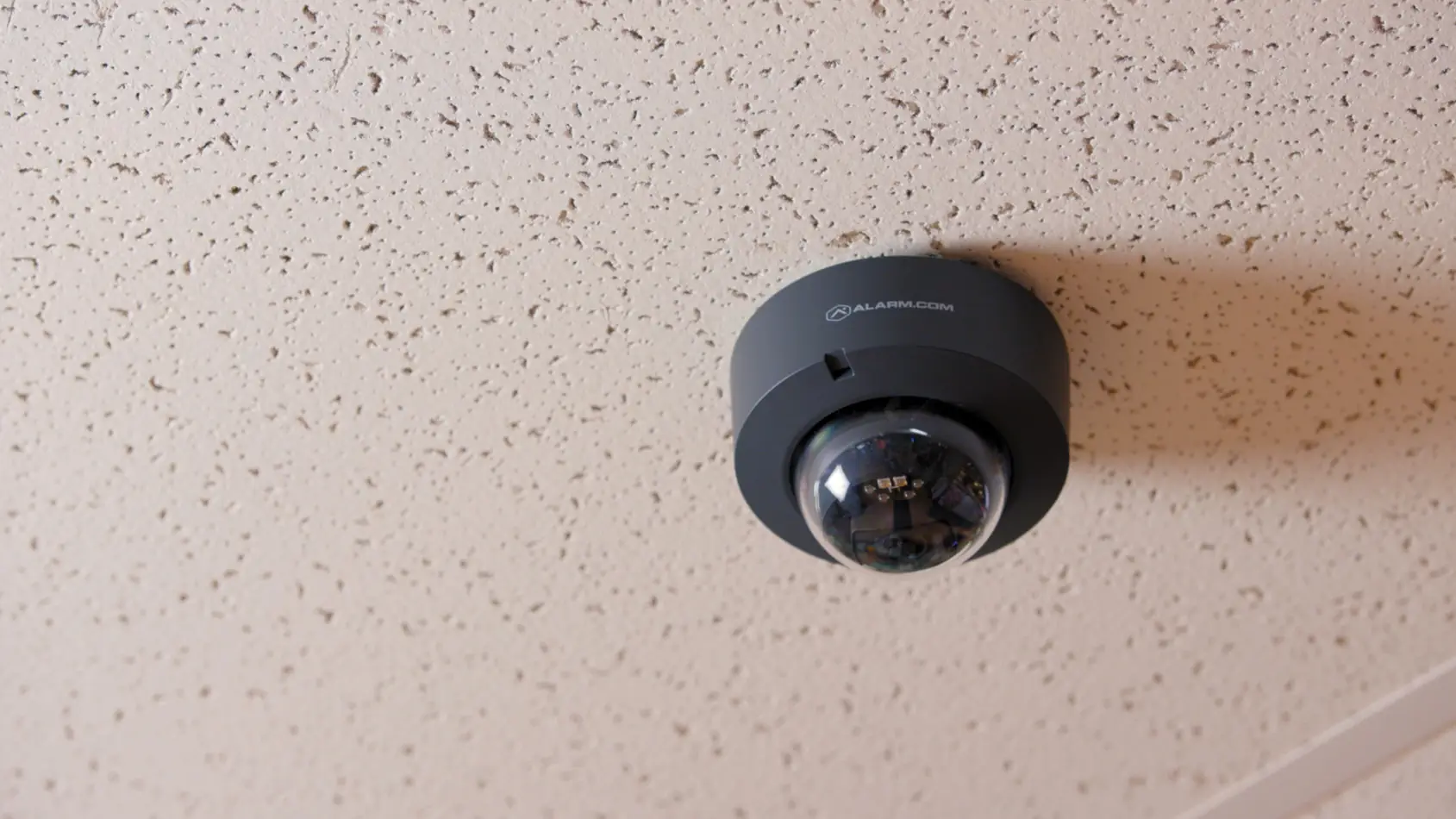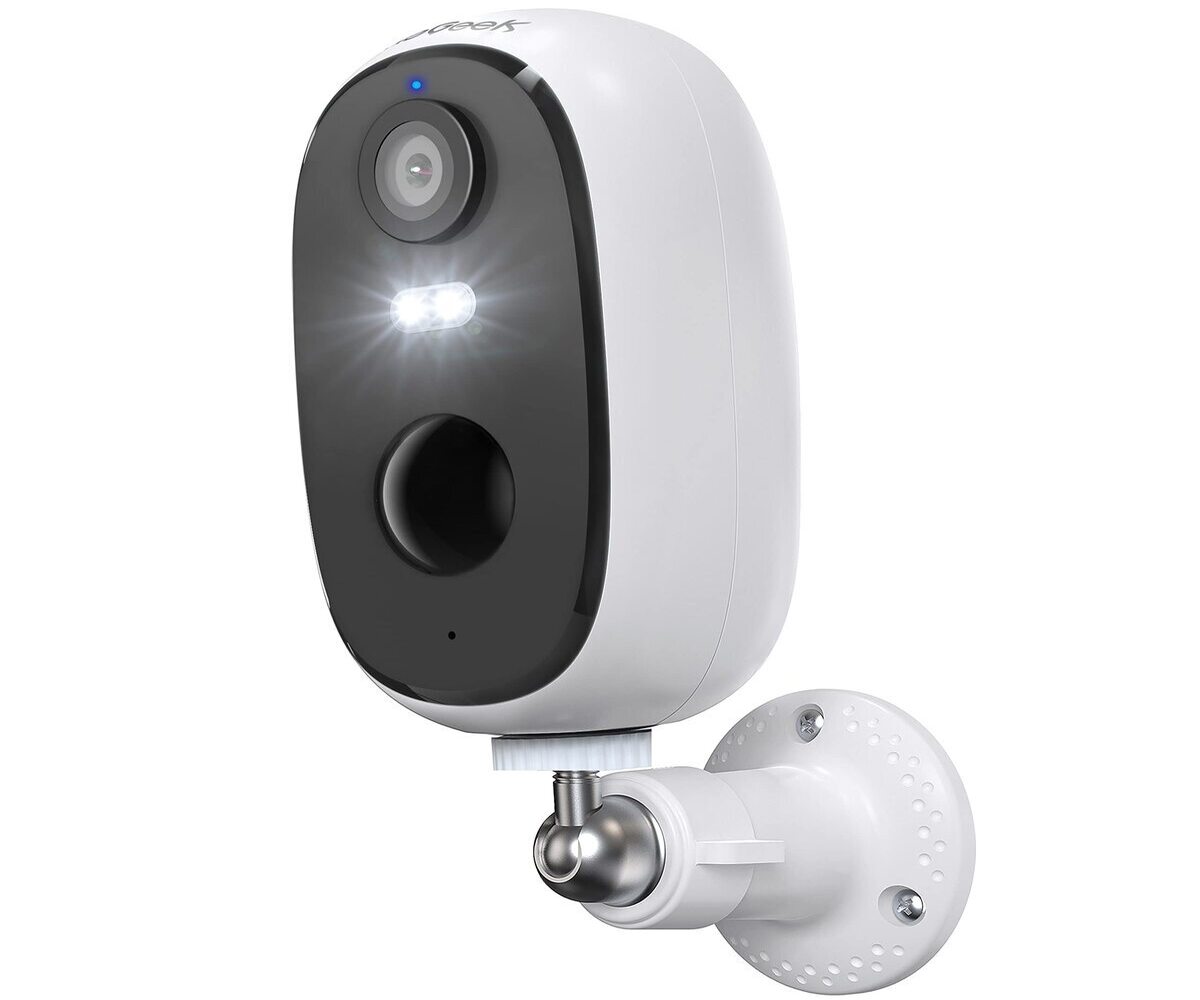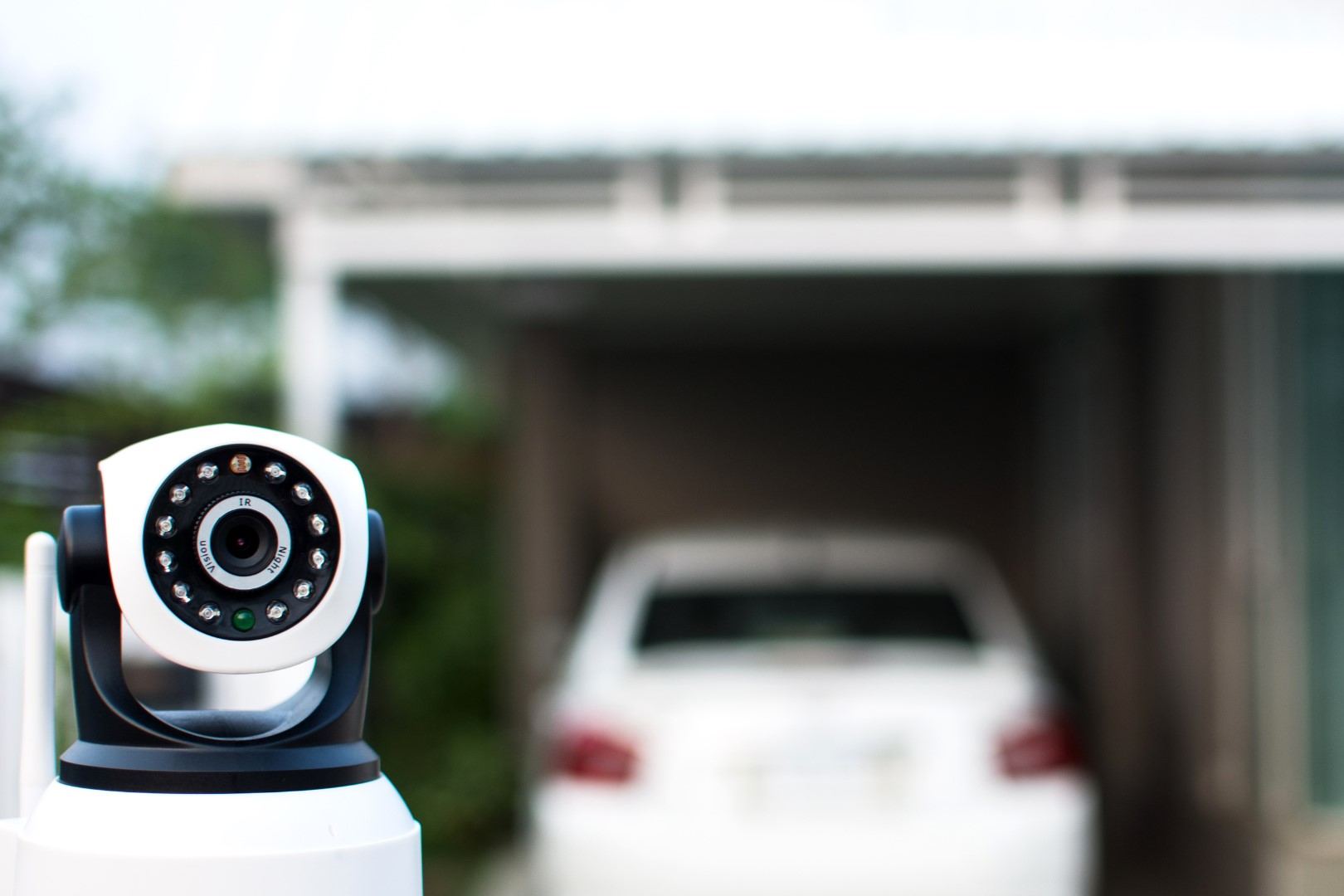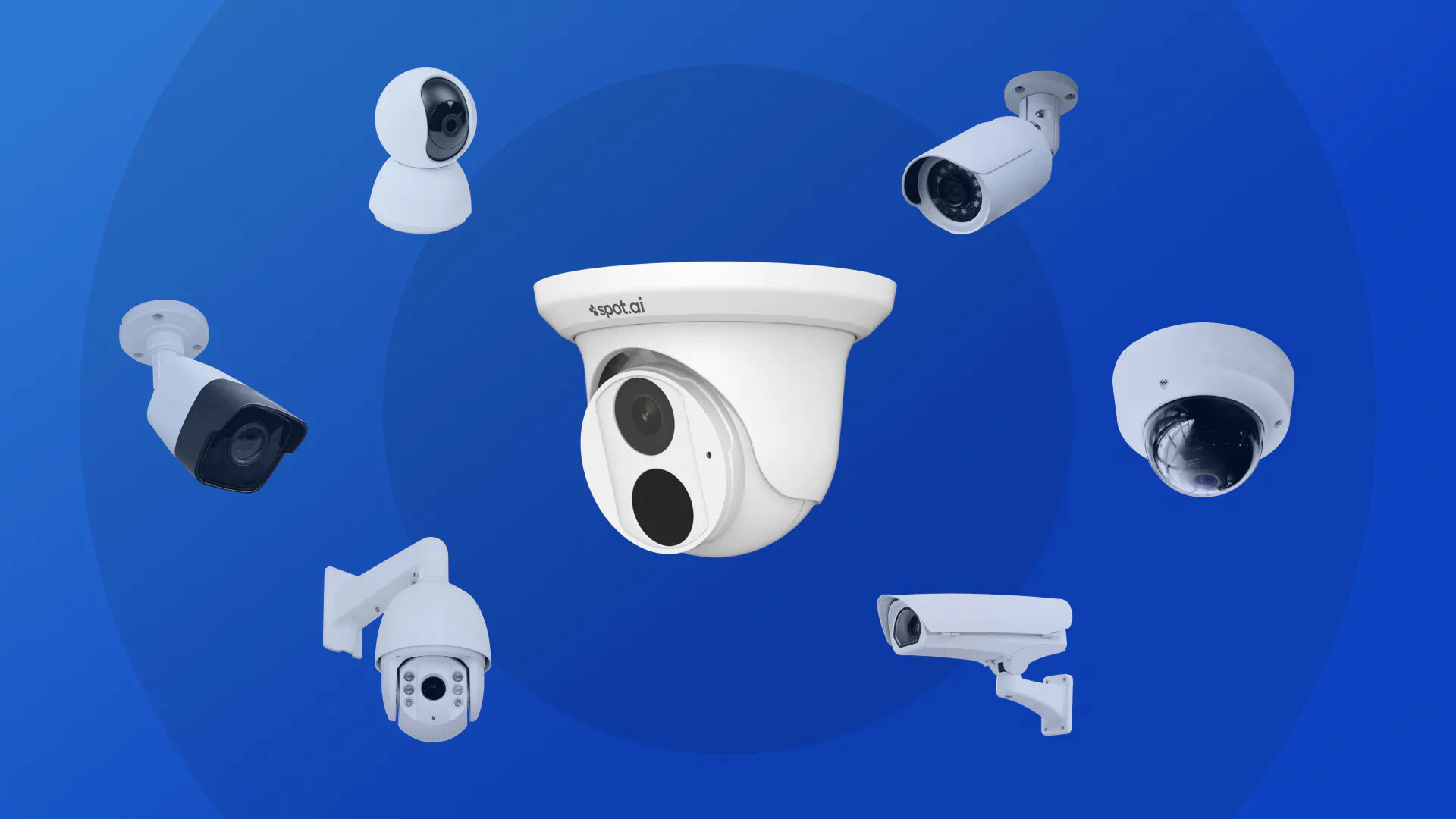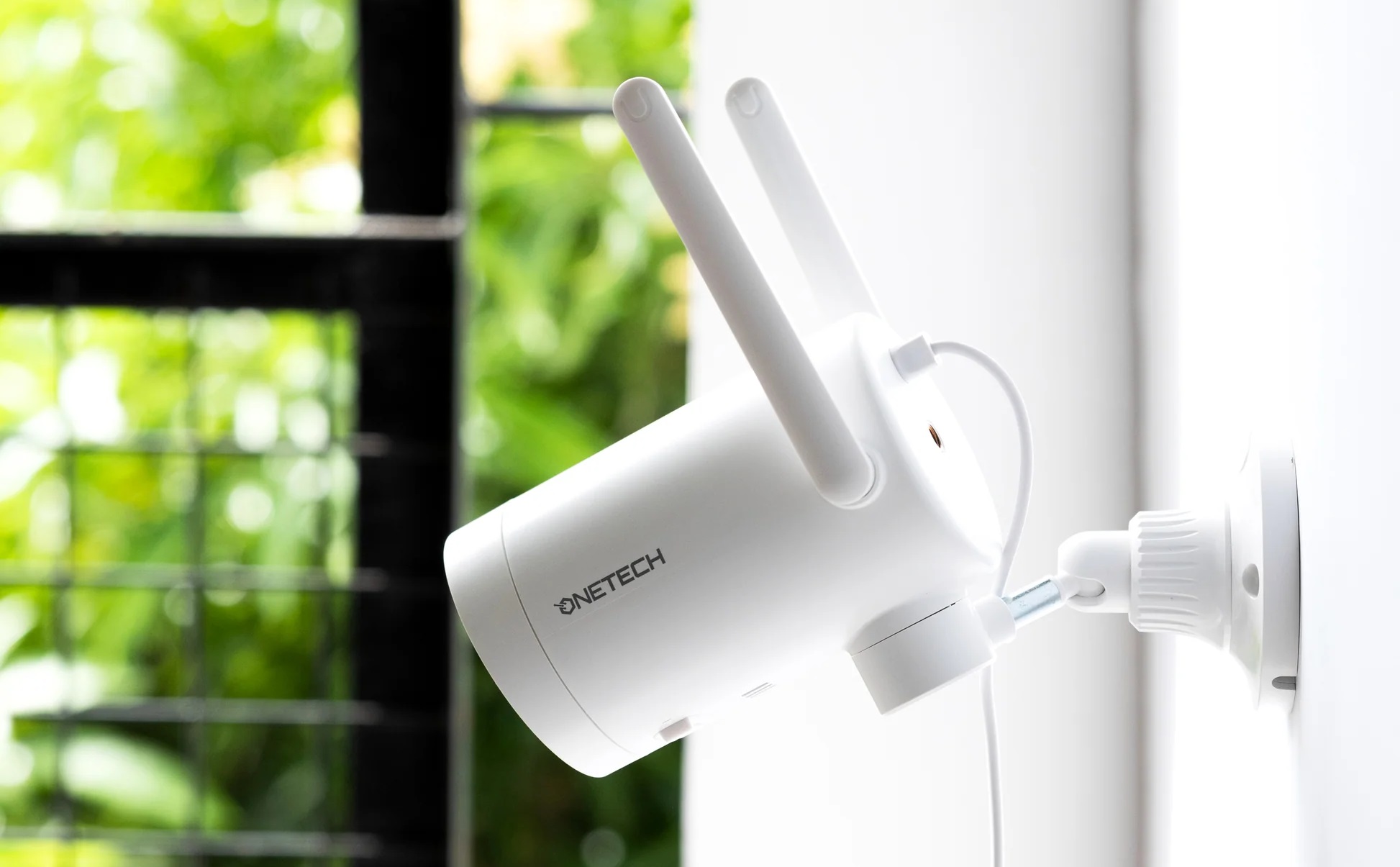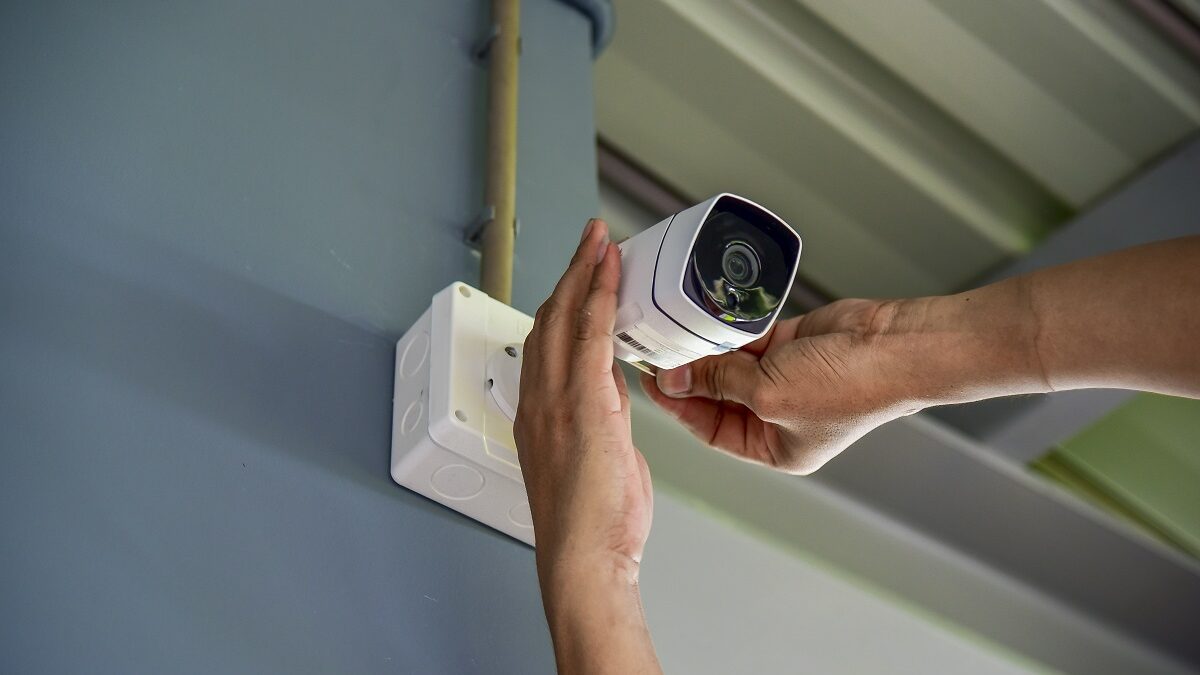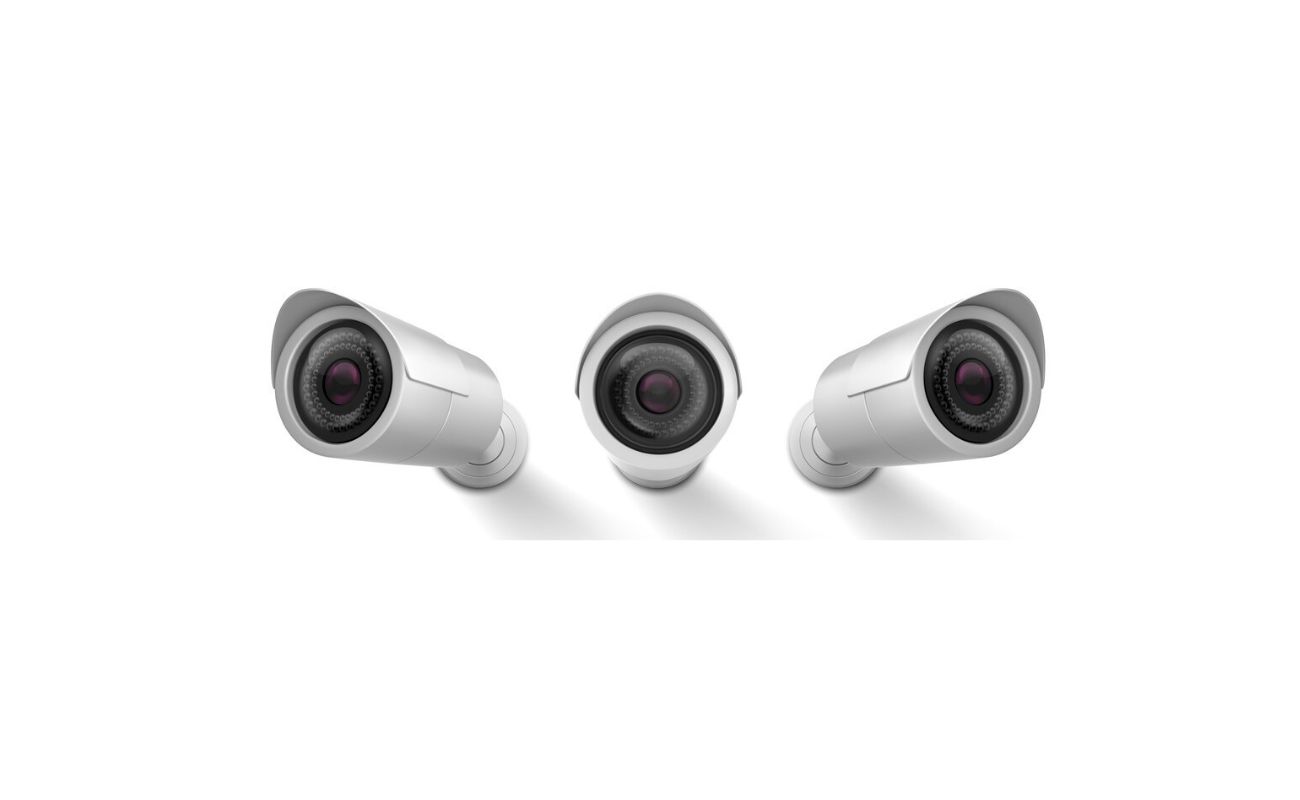Home>Home Security and Surveillance>How Do Security Cameras Get Power
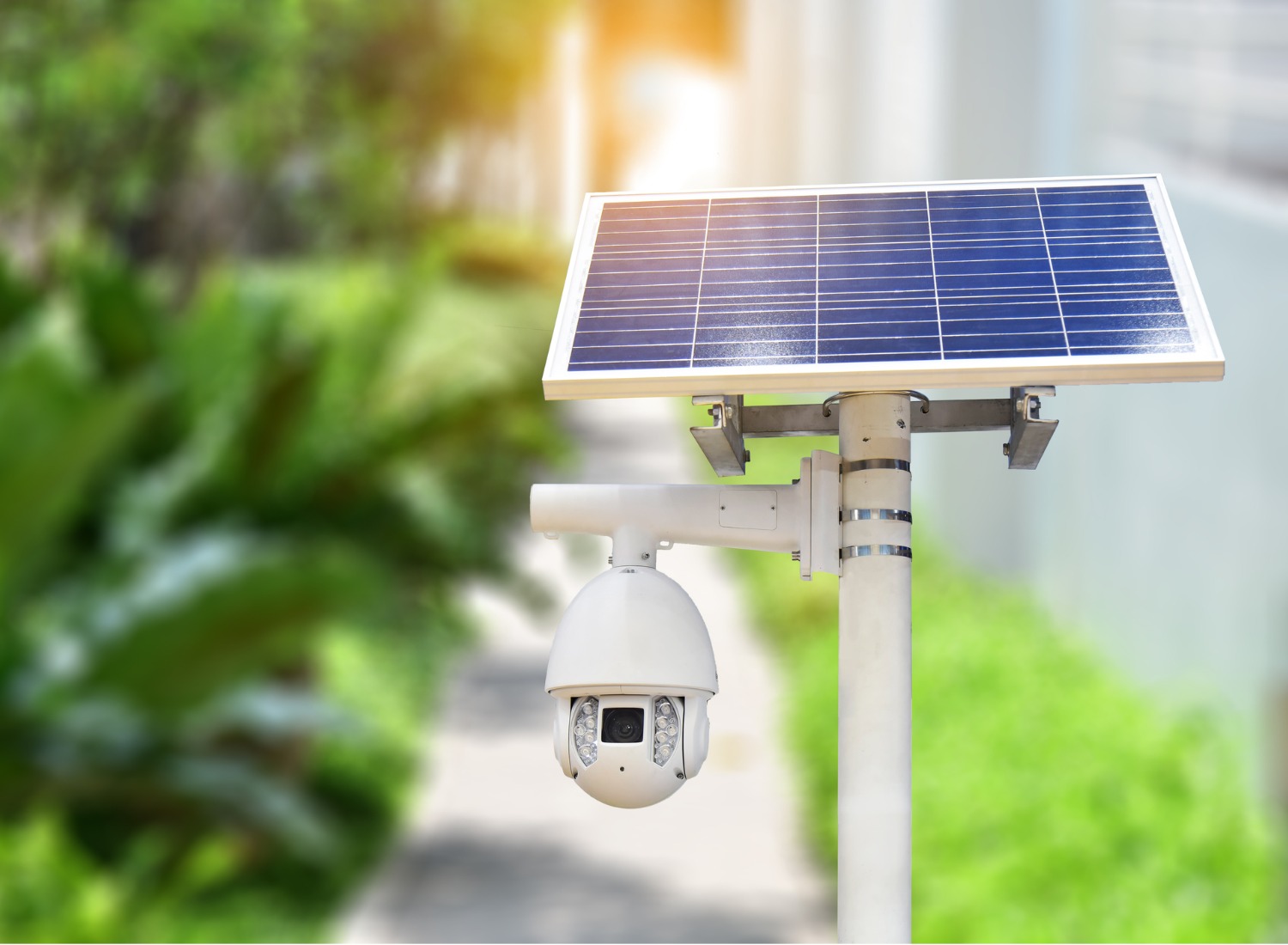

Home Security and Surveillance
How Do Security Cameras Get Power
Modified: October 20, 2024
Discover how home security and surveillance cameras get their power and ensure the safety of your property with the most effective solutions.
(Many of the links in this article redirect to a specific reviewed product. Your purchase of these products through affiliate links helps to generate commission for Storables.com, at no extra cost. Learn more)
Introduction
When it comes to home security and surveillance, one of the most crucial elements is the power supply for security cameras. Without a proper and reliable power source, even the most advanced surveillance system won’t be able to function effectively. Understanding how security cameras get their power is essential for homeowners looking to enhance their home security measures.
In this article, we will explore the importance of power supply for security cameras and discuss the various types of power sources available. We will also delve into the factors to consider when choosing a power source for security cameras and provide insights on the installation and maintenance processes.
Whether you’re installing security cameras to monitor your property, deter potential intruders, or simply gain peace of mind, understanding the power requirements is vital for a successful surveillance system.
Key Takeaways:
- Choose the Right Power Source
Selecting the best power supply for security cameras is crucial for reliable surveillance. Consider factors like camera placement, power consumption, and environmental conditions to make an informed decision. - Proper Installation and Maintenance
Ensure proper installation and regular maintenance of power sources to keep your surveillance system running smoothly. Follow manufacturer guidelines, monitor power consumption, and consider backup power options for uninterrupted operation.
Read more: How To Get Power To Outdoor Security Camera
Importance of Power Supply for Security Cameras
The power supply is the lifeblood of security cameras. Without a reliable source of power, your surveillance system would be ineffective and unable to perform its primary function of capturing and recording video footage.
A stable and uninterrupted power supply is essential to ensure that your security cameras operate continuously, allowing you to monitor your home and property around the clock. Here are a few key reasons why a reliable power supply is crucial for security cameras:
- Continuous Monitoring: Security cameras need consistent power to operate 24/7. This ensures that you can monitor your property day and night, providing you with peace of mind.
- Clear Video Footage: A stable power supply helps maintain optimal camera performance, ensuring that you capture high-quality and clear video footage. Power interruptions or voltage fluctuations can result in distorted or blurry footage, making it difficult to identify crucial details.
- Remote Accessibility: Many security cameras offer remote viewing capabilities, allowing you to access live footage and recordings from your smartphone or computer. A reliable power supply is essential for ensuring uninterrupted access to your surveillance system remotely.
- Emergency Situations: In the event of a break-in or other emergencies, you need your security cameras to be operational. A power outage during such critical moments could render your surveillance system useless when you need it the most.
By having a dependable power supply for your security cameras, you can have confidence in the functionality and effectiveness of your home surveillance system. It ensures that your cameras are always working, providing you with valuable evidence in case of any security threats or incidents.
Types of Power Sources for Security Cameras
When it comes to powering your security cameras, there are several options to choose from. The most suitable power source for your cameras will depend on various factors, including the camera’s power requirements, location, and your specific needs. Here are the four common types of power sources for security cameras:
- AC Power Supply: The most traditional and widely used power source for security cameras is AC (Alternating Current) power. AC power is supplied through a standard electrical outlet, and it provides a consistent and reliable source of power to the cameras. This method is particularly suitable for indoor security cameras installed near power outlets. It is important to ensure that the power supply is not easily accessible for potential tampering by intruders.
- PoE (Power over Ethernet): PoE is a convenient method for powering security cameras, especially for systems with multiple cameras or those installed in remote locations without easy access to power outlets. With PoE, both data and power are delivered through a single Ethernet cable, simplifying installation and reducing the need for additional power cables. PoE switches or injectors are used to inject power into the Ethernet cable, delivering power to each camera.
- Battery Power: Battery-powered security cameras are an excellent option for locations where it is challenging to run power cables or in situations where temporary monitoring is required. These cameras are powered by rechargeable batteries, providing flexibility in terms of camera placement. However, it is important to monitor battery life and ensure regular maintenance to avoid gaps in surveillance due to battery drain.
- Solar Power: Solar-powered security cameras are an environmentally friendly option that utilizes the energy from the sun to operate. These cameras are equipped with built-in solar panels that convert sunlight into electricity, which powers the cameras. Solar-powered cameras are especially suitable for outdoor locations with ample sunlight and where access to electrical outlets is limited. They help reduce energy costs and are ideal for eco-conscious homeowners.
Each power source option has its advantages and limitations, and choosing the right one depends on factors such as camera placement, availability of power sources, and specific requirements of your surveillance system. It is essential to assess your needs and consult with a professional to determine the most suitable power source for your security cameras.
AC Power Supply
The most common and traditional power source for security cameras is the AC (Alternating Current) power supply. AC power is readily available in homes and commercial buildings through standard electrical outlets.
AC power supply offers several advantages for security cameras:
- Reliability: AC power provides a consistent and reliable source of power to security cameras. As long as the electrical outlet is functional and there are no power outages, the cameras will receive uninterrupted power.
- Compatibility: Most security cameras on the market are designed to work with AC power supply. They often come with power adapters that can be plugged into a standard electrical outlet.
- Ease of Installation: AC power supply requires minimal installation effort. Simply plug the power adapter into the outlet and connect it to the camera’s power input. This makes it a suitable option for indoor cameras installed near power outlets.
However, there are a few considerations to keep in mind when using AC power supply for security cameras:
- Distant Placement: If your security cameras need to be installed far away from an electrical outlet, you may need to use extension cords or consider alternative power sources such as PoE or battery power.
- Power Outages: In the event of a power outage, the cameras will lose power unless you have a backup power source such as an uninterruptible power supply (UPS). During outages, your surveillance system will be inaccessible until power is restored.
- Vulnerable to Tampering: The AC power supply cables running from the outlet to the camera can be vulnerable to tampering or disconnection. Ensure that the power source is discreetly located and not easily accessible to potential intruders.
Overall, AC power supply is a reliable and straightforward option for powering security cameras, especially for indoor installations near electrical outlets. However, it is important to consider the distance from the power source and take appropriate precautions to protect the power supply cables from tampering.
PoE (Power over Ethernet)
PoE (Power over Ethernet) is a convenient and efficient method of powering security cameras, especially for systems with multiple cameras or installations in remote locations without easy access to power outlets. Instead of relying on separate power cables, PoE allows both data and power to be delivered through a single Ethernet cable.
Here are some key features and benefits of using PoE for security cameras:
- Data and Power Delivery: With PoE, power and data are transmitted through the same Ethernet cable, eliminating the need for additional power cables and simplifying the installation process. This reduces clutter and makes it easier to manage the wiring for multiple cameras.
- Centralized Power Source: PoE relies on a PoE switch or injector to inject power into the Ethernet cable. This allows for centralized power distribution, so you don’t need individual power sources for each camera. It simplifies the setup and reduces the number of power outlets needed.
- Flexible Camera Placement: PoE provides flexibility in camera placement. Since the cameras receive power through the Ethernet cable, they can be installed in locations that may be difficult to access with traditional power outlets. This is particularly useful for outdoor installations or areas where running power cables is challenging.
- Scalability: PoE is highly scalable, making it suitable for systems with numerous cameras. Additional cameras can be easily added by connecting them to the PoE switch or injector, without the need for additional power infrastructure.
- Remote Power Management: PoE switches often come with remote management capabilities, allowing you to monitor the power usage, diagnose issues, and reset cameras remotely. This adds convenience and reduces the need for physical intervention in case of power-related problems.
It is important to note that not all security cameras are PoE-compatible. Before opting for PoE, ensure that your cameras are PoE-enabled or that you have the necessary PoE adapters or injectors to deliver power to the cameras.
PoE injectors and switches should be properly sized to provide adequate power for all connected cameras. Consult with a professional to determine the power requirements of your cameras and choose the appropriate PoE equipment.
Overall, PoE is a reliable and scalable option for powering security cameras, particularly for larger systems or installations without easy access to power outlets. It eliminates the need for separate power cables, reduces clutter, and offers flexibility in camera placement.
Read more: How Do Wireless Security Cameras Get Power?
Battery Power
Battery-powered security cameras are a versatile option for powering your surveillance system, especially in locations where it is challenging to run power cables or where temporary monitoring is required. These cameras rely on rechargeable batteries to provide the necessary power.
Here are some key points to consider about using battery power for security cameras:
- Flexibility in Camera Placement: Battery-powered cameras offer the advantage of flexibility in camera placement. Without the need for power cables, these cameras can be installed in various locations, including areas where access to electrical outlets is limited or impractical.
- Easy Setup: Battery-powered cameras are relatively easy to set up. Simply mount the camera in the desired location, insert and charge the batteries, and connect to your network if applicable. This makes them a convenient option for temporary surveillance needs or situations where quick installation is required.
- Wireless Connectivity: Battery-powered cameras typically come with wireless connectivity options, allowing you to access live footage and recordings remotely through a smartphone or computer. This adds convenience and flexibility in monitoring your property when you’re away.
- Maintenance and Battery Life: Regular battery maintenance is crucial for ensuring uninterrupted camera operation. It is important to monitor battery life and recharge or replace the batteries as needed. Battery life can vary depending on factors such as camera usage, motion detection settings, and environmental conditions.
- Considerations for Extreme Temperatures: Extreme temperatures can impact battery performance. In very cold weather, battery life may be reduced, while excessive heat can affect battery longevity. It is essential to choose cameras and batteries designed to withstand the environmental conditions of your location.
While battery-powered security cameras offer flexibility and ease of installation, there are some limitations to consider. Battery life and the need for regular maintenance are important factors, especially if you require continuous monitoring. It is essential to monitor battery levels and plan for recharging or replacing batteries to prevent any gaps in surveillance.
Battery-powered cameras are recommended for short-term surveillance needs, remote areas without power access, or situations where portability is required. For long-term and continuous surveillance requirements, alternative power sources such as AC power or PoE may be more suitable.
Before choosing battery-powered cameras, assess your specific needs and consult with professionals to ensure that they align with your surveillance goals and that you have a proper plan for maintaining the batteries to ensure reliable camera operation.
Solar Power
Solar power is an environmentally friendly and renewable energy source that can be utilized to power security cameras. Solar-powered cameras are equipped with built-in solar panels, which convert sunlight into electricity to provide the necessary power.
Here are some key considerations and benefits of using solar power for security cameras:
- Energy Efficiency: Solar-powered cameras harness the energy from the sun, making them highly energy-efficient and reducing reliance on traditional power sources. By utilizing solar power, you can significantly reduce your carbon footprint and contribute to a greener environment.
- Remote Locations: Solar-powered cameras are an excellent choice for locations where access to electrical outlets is limited or non-existent. They allow you to implement surveillance in remote areas such as rural properties, construction sites, or agricultural fields without the need for costly electrical infrastructure.
- Cost-effectiveness: While the initial installation cost of solar-powered cameras may be higher compared to other power sources, they can result in long-term cost savings. Solar power is free, eliminating the need for ongoing electricity charges. Additionally, solar-powered cameras may be eligible for certain renewable energy incentives and tax credits.
- Reliability: Solar-powered cameras can operate even during power outages since they are not dependent on grid electricity. As long as there is sunlight, the cameras will continue to operate, providing you with continuous surveillance coverage.
- Low Maintenance: Solar-powered cameras generally require minimal maintenance. As long as the solar panels are kept clean and free from debris, they can efficiently convert sunlight into electricity. Routine checks and occasional cleaning are recommended to ensure optimal performance.
It is important to understand that solar-powered cameras rely on sunlight to generate power. Therefore, the effectiveness of solar power as a power source depends on the amount of sunlight available in your location. Regions with ample sunlight will yield the best results, while areas with frequent cloudy weather may experience intermittent power supply.
When choosing solar-powered cameras, consider the following factors:
- Solar Panel Efficiency: Look for cameras with high-efficiency solar panels to maximize the amount of energy they can harness from the sun.
- Battery Backup: Consider cameras equipped with battery backup systems to store excess energy for use during periods of limited sunlight or at night.
- Proper Sunlight Exposure: Ensure that the solar panels are installed in a location that receives ample sunlight throughout the day and is not obstructed by trees, buildings, or other objects.
Solar power can be an excellent choice for powering security cameras, especially in off-grid locations or areas where access to electrical power is impractical. It offers sustainability, cost-effectiveness, and reliable surveillance coverage, making it a viable option for environmentally conscious homeowners.
Consider using a power over Ethernet (PoE) system for your security cameras. This allows the cameras to receive power and data through a single Ethernet cable, simplifying installation and reducing the need for additional power sources.
Factors to Consider when Choosing a Power Source for Security Cameras
Choosing the right power source for your security cameras is crucial for ensuring reliable and continuous surveillance coverage. Several factors must be considered when making this decision:
- Distance from Power Source: The distance between your security cameras and the power source is a crucial factor to consider. If the cameras are located far away from electrical outlets, options like PoE or battery power may be more suitable to avoid the need for extensive wiring or the limitations of power cables.
- Security Camera Placement: The location and mounting options for your cameras will play a role in determining the best power source. For indoor cameras near power outlets, AC power supply may be the most convenient. For outdoor cameras or remote installations, PoE, battery power, or solar power can offer more flexibility.
- Power Consumption: Understanding the power requirements of your security cameras is essential. Different camera models have varying power consumption levels. Ensure that the chosen power source can meet the power demands of your cameras to avoid issues such as unstable performance or frequent battery replacements.
- Reliability and Accessibility: Consider the reliability and accessibility of the power source. AC power supply from the grid is typically reliable, but it may be vulnerable to power outages. In contrast, options like PoE or battery power can provide more autonomy and flexibility in inaccessible areas or during emergencies.
- Weather Conditions: Assess the environmental conditions around your surveillance system. If you live in an area prone to extreme temperatures, such as very cold or hot climates, consider power sources that can endure these conditions. Battery power and solar power can be suitable alternatives in such situations.
- Cost Considerations: Evaluate the cost implications of different power sources. AC power supply may require professional installation and ongoing electricity costs, while PoE and battery power can reduce electrical expenses. Solar power may have a higher upfront cost but can result in long-term savings by harnessing renewable energy.
It is crucial to assess your specific requirements, camera placement, and available resources when choosing a power source for your security cameras. Consulting with a professional can provide valuable insights and help you make an informed decision based on your unique needs.
By considering these factors, you can select the most suitable power source that ensures reliable operation and optimal performance for your security cameras.
Distance from Power Source
The distance between your security cameras and the power source is an important consideration when choosing a power supply. It is essential to assess the distance to determine the feasibility of running power cables or consider alternative power sources that can accommodate the required distance.
Here are some key points to consider regarding the distance from the power source:
- AC Power Supply: If your security cameras are located within a reasonable distance from electrical outlets, AC power supply can be a convenient option. The cameras can be directly connected to the outlet using the provided power adapters.
- PoE (Power over Ethernet): PoE eliminates the need for long power cables by combining power and data transmission through a single Ethernet cable. It is suitable for situations where the cameras are located far from power outlets, as long as the Ethernet cable can reach the cameras.
- Battery Power: Battery-powered cameras offer flexibility in terms of camera placement, as they don’t require power cables. However, the distance needs to be considered in terms of the battery life and the need for regular maintenance or replacement of batteries, especially if the distance is significant.
- Solar Power: Solar-powered cameras can be a viable option for locations with long distances from power sources, as they do not rely on electrical infrastructure. The solar panels can be installed near the cameras, ensuring that they receive sufficient sunlight to generate power.
It is important to determine the maximum distance between the cameras and the power source to ensure a reliable power supply. Factors such as voltage drop and power loss due to cable resistance should be taken into account, especially for long cable runs.
For distances beyond the capabilities of traditional power sources, consider utilizing power distribution equipment such as PoE extenders or Ethernet repeaters to extend the reach of the power supply.
Consulting with a professional can provide guidance on the best power source and any necessary equipment to address long distances. They can also ensure compliance with electrical safety standards and help optimize power delivery for your security cameras.
By carefully considering the distance from the power source, you can make an informed decision on the most suitable power supply option for your security cameras, ensuring that they receive reliable power regardless of their placement.
Security Camera Placement
The placement of your security cameras plays a crucial role in determining the most suitable power source. Considerations such as indoor or outdoor installations, camera mounting options, and accessibility to power outlets will guide your choice of power supply.
Here are some key factors to consider when it comes to security camera placement:
- Indoor vs. Outdoor: Determine whether your cameras will be installed indoors or outdoors. Indoor cameras generally have easier access to power outlets, making AC power supply a convenient option. Outdoor cameras, on the other hand, may require alternative power sources such as PoE, battery power, or solar power, especially when power outlets are not readily available or difficult to access.
- Mounting Options: Consider the mounting options available for your cameras. Some cameras may require wall mounting, while others can be placed on ceilings or poles. Ensure that the chosen power source can support the chosen camera placement and the associated wiring requirements.
- Accessibility to Power Outlets: Evaluate the proximity of power outlets to your desired camera locations. AC power supply is convenient when power outlets are easily accessible. If power outlets are limited or far from the camera locations, PoE, battery power, or solar power can offer more flexibility.
- Protection from Elements: Outdoor cameras need to withstand various weather conditions. Ensure that the power source you choose is weatherproof and can handle exposure to rain, snow, or extreme temperatures. Battery-powered or solar-powered cameras are often designed to be weather-resistant and suitable for outdoor use.
- Concealment and Security: Consider the need for concealing the power cables. If you want to minimize the visibility of wires, options like PoE or battery power can be advantageous, as they reduce the need for visible power cables. This can help enhance the aesthetic appeal of your surveillance system and reduce the risk of tampering.
Knowing the placement requirements of your security cameras will allow you to choose the power source that best meets those needs. It is essential to plan the installation carefully and ensure that the power supply is safely and securely routed to the cameras, especially for outdoor installations.
Consulting with a professional or an experienced installer can help ensure that you make the right decisions regarding camera placement and power supply. They can provide guidance on the best power source for your specific camera locations, taking into account factors such as accessibility, protection from the elements, and overall system design.
By considering the security camera placement, you can select the most suitable power source that supports the functionality and reliability of your surveillance system.
Power Consumption
Understanding the power consumption of your security cameras is essential when choosing an appropriate power source. Different camera models have varying power requirements, and it’s crucial to ensure that the chosen power supply can meet or exceed those demands to ensure reliable and uninterrupted operation.
Consider the following factors related to power consumption:
- Camera Specifications: Review the technical specifications of your security cameras to determine their power requirements. Look for information on voltage, current, or wattage to understand the amount of power needed to operate each camera.
- Number of Cameras: If you are installing multiple cameras, the combined power consumption must be considered. Add up the power requirements of all the cameras to determine the total power capacity needed from the power source.
- Power Overhead: It is advisable to have a power source that can handle a slightly higher power capacity than the combined requirements of your cameras. This allows for any power fluctuations or increased power demands during certain camera operations, ensuring stable and reliable performance.
- Additional Features: Keep in mind that certain features of security cameras, such as night vision, PTZ (Pan-Tilt-Zoom), or continuous recording, may increase power consumption. Take these features into account when calculating the power requirements of your cameras.
- Power Supply Rating: Ensure that the power supply you choose can provide the necessary voltage and current output to meet the power demands of your cameras. Using an underpowered power supply can lead to unstable camera performance or even damage to the cameras.
It is always a good idea to consult the manufacturer’s specifications or seek professional advice to determine the power consumption requirements of your cameras accurately.
Choosing a power source that can supply sufficient power to your cameras is crucial for their proper functioning. Insufficient power supply can cause camera malfunctions, video recording interruptions, or unreliable performance. On the other hand, oversupplying power can lead to unnecessary energy consumption and potential safety risks.
By understanding and considering the power consumption of your security cameras, you can select an appropriate power source that meets their requirements, ensuring optimal performance and longevity.
Installation and Maintenance of Power Sources for Security Cameras
Proper installation and maintenance of power sources for security cameras are critical to ensure the reliable and efficient operation of your surveillance system. Whether you choose AC power supply, PoE, battery power, or solar power, following best practices will help optimize the performance and longevity of the power sources.
Here are some key considerations for the installation and maintenance of power sources:
- Installation:
- Follow manufacturer guidelines: Adhere to the manufacturer’s guidelines and instructions for installing the specific power source you have chosen. This includes proper wiring connections, grounding, and any necessary safety precautions.
- Seek professional help if needed: If you are unsure about the installation process or lack experience with electrical work, it is advisable to seek professional assistance. An experienced installer can ensure proper installation, preventing any risks or potential damage caused by incorrect wiring or connections.
- Weatherproofing: For outdoor installations, ensure that the power source and wiring connections are adequately protected against the elements. This may involve using weatherproof enclosures and sealing any entry points to prevent water damage.
- Consider future scalability: If you anticipate expanding your security system in the future, take this into account during installation. Plan for additional power outlets or the capacity to accommodate more cameras if necessary.
- Maintenance:
- Regular inspections: Periodically inspect the power source, cables, and connections to ensure they are in good condition. Look for any signs of wear, damage, or loose connections that could affect the power supply or camera performance.
- Clean solar panels: If using solar power, regularly clean the solar panels to remove any dirt, debris, or dust that may hinder their efficiency. Ensure the panels receive sufficient sunlight for optimal power generation.
- Battery maintenance: If utilizing battery power, carefully follow the manufacturer’s guidelines for battery maintenance. This may involve routines such as checking battery levels, monitoring battery health, and performing regular recharging or battery replacement as needed.
- Monitor power consumption: Keep track of the power consumption of your cameras and regularly assess the power supply’s capacity to meet the demand. If you notice any power fluctuations or issues, investigate and address them promptly.
- Backup power options: Consider implementing backup power solutions such as uninterruptible power supplies (UPS) to provide temporary power in the event of an outage or as a failsafe measure to prevent camera downtime.
Remember, always prioritize your safety when dealing with electrical installations or maintenance. If you are uncertain or uncomfortable with any aspect of power source installation or maintenance, consult with a qualified electrician or seek professional assistance.
Regular inspection and maintenance of power sources will help ensure the continuous operation and reliability of your security cameras. By following proper installation procedures and adhering to maintenance routines, you can maximize the performance and lifespan of your power sources, keeping your surveillance system running smoothly.
Conclusion
Choosing the right power source for your security cameras is a critical aspect of maintaining an effective and reliable surveillance system. Understanding the various types of power sources available and considering factors such as distance from power sources, camera placement, power consumption, and maintenance requirements is essential in making an informed decision.
AC power supply is a traditional and convenient option for indoor installations near power outlets, while PoE provides a streamlined solution for multiple cameras or remote locations. Battery power offers flexibility and portability, ideal for areas without easy access to power outlets, and solar power provides an eco-friendly and independent solution for outdoor installations.
Proper installation and regular maintenance of power sources are crucial to ensure optimal performance and longevity. Following manufacturer guidelines and seeking professional assistance when needed ensures the correct wiring connections and safety measures are in place. Monitoring power consumption, inspecting for wear or damage, and maintaining battery life contribute to the continuous operation of the surveillance system.
In conclusion, selecting the appropriate power source for your security cameras is a decision that should consider aspects such as camera placement, power requirements, and environmental factors. By choosing the right power source and implementing the installation and maintenance best practices, you can maximize the reliability and effectiveness of your security camera system.
Consulting with professionals and experts in the field can provide valuable insights and ensure that your chosen power source meets your specific needs and delivers reliable power to your security cameras. With the right power source in place, you can have peace of mind knowing that your home or property is under constant surveillance, enhancing your overall security and safety.
Frequently Asked Questions about How Do Security Cameras Get Power
Was this page helpful?
At Storables.com, we guarantee accurate and reliable information. Our content, validated by Expert Board Contributors, is crafted following stringent Editorial Policies. We're committed to providing you with well-researched, expert-backed insights for all your informational needs.
